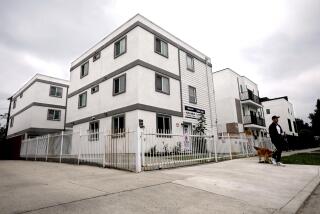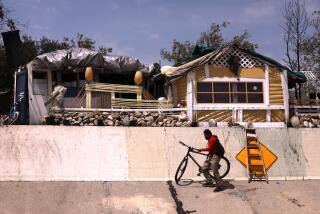A Midcentury Modern homeless shelter rises in an abandoned Hollywood library
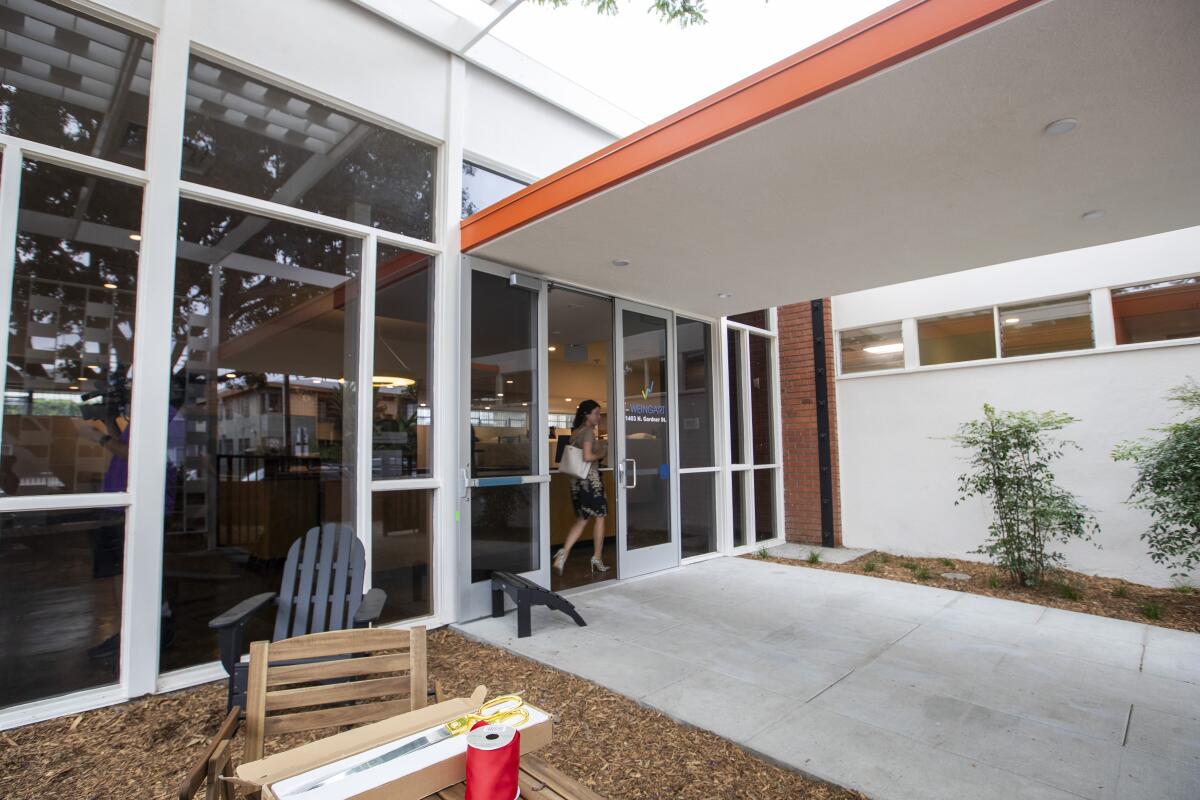
- Share via
A women’s shelter opened Tuesday in a restored Midcentury Modern library building in Hollywood, continuing the trend of converting distinctive structures to take homeless people off the sagging entertainment community’s streets.
The 30-bed facility on Gardner Street below Sunset Boulevard brings to seven the number of new L.A. homeless shelters, and 377 beds, since Mayor Eric Garcetti’s A Bridge Home program launched last year.
The mayor had called for at least 15 shelters throughout the city, and 1,500 beds, by this year. Hollywood, with a homeless population of 2,500, second only to downtown, is emerging as a shelter hub.

A 64-bed crisis housing facility for women opened in November in the former Hollywood Studio Club, a 1926 Mediterranean landmark designed by Hearst Castle architect Julia Morgan.
The chaperoned club helped foster the old Hollywood star system by housing young acting hopefuls including Marilyn Monroe, Kim Novak and Rita Moreno, according to documents filed with the National Register of Historic Places. The building is owned by YWCA Greater Los Angeles, which may move its office to make room for more shelter beds.
In April, the city opened a tent-structure shelter for 72 men and women on Schrader Boulevard, between Sunset and Hollywood boulevards. And a fourth, newly rebuilt shelter is due to open by year’s end in a century-old Hollywood mansion on Camino Palmero, near Runyon Canyon.
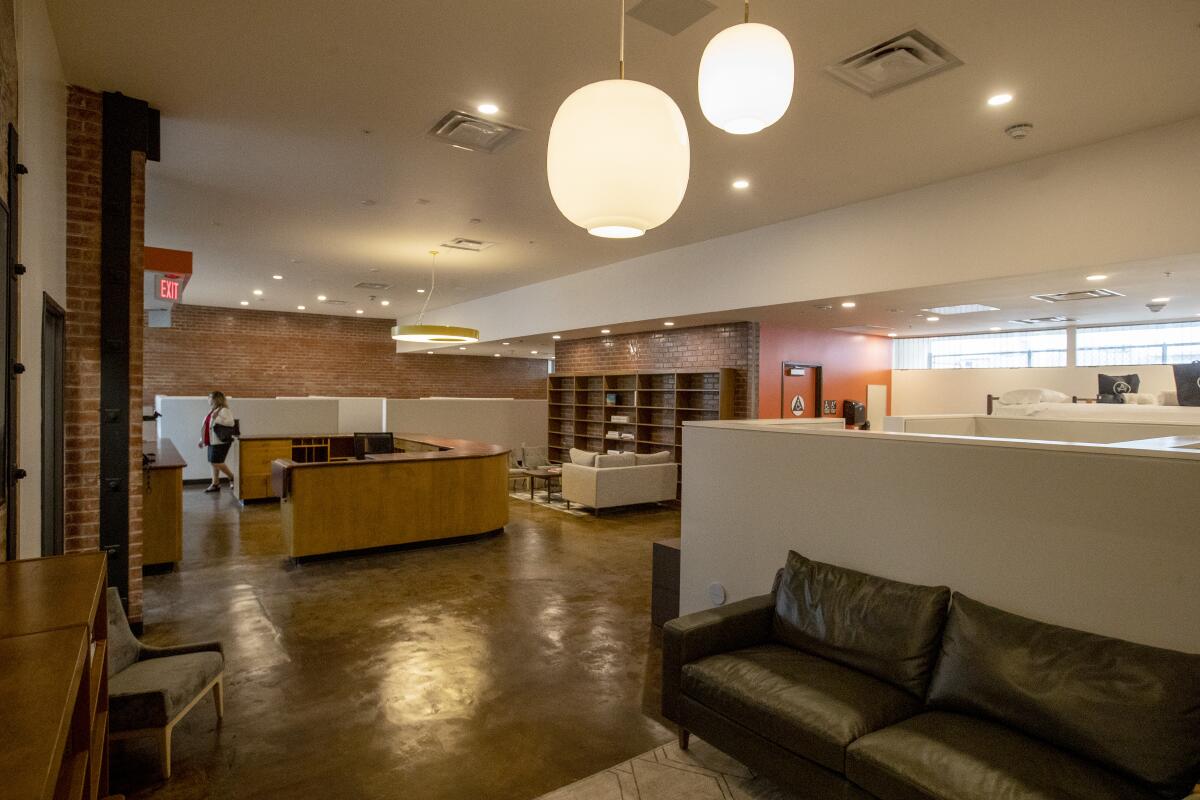
The Gardner Street library, built in 1958, is a classic example of Midcentury Modern design, officials said. It emptied in 2004 when the larger Will & Ariel Durant Library opened nearby, and sat largely unused until Councilman David Ryu proposed adapting it in 2017 for emergency housing.
At the shelter opening Tuesday, Ryu said the property didn’t initially pop up on the city’s list of possible shelter sites because the sanitation department had an air scrubber on part of the property.
“The fact we were able to salvage this building, keep its historic integrity and help meet the crisis of our time is beautiful,” Ryu said.
The restoration work was performed by city crews and preserved the design, including the original circulation desk and the exterior honeycomb breeze screen wall and matching trellis.
The residents, who will begin moving in next week, will use the original book shelves for storage. The louvered windows and interior brick wall were kept, and a low-slung sofa and hanging pendant light fixtures pick up the Midcentury theme.
Bunk beds occupy the old shelving areas, and landscaping and seating are arranged around a large shade tree. At least one of the new residents lived in the neighborhood and once took her children to the library, officials said.
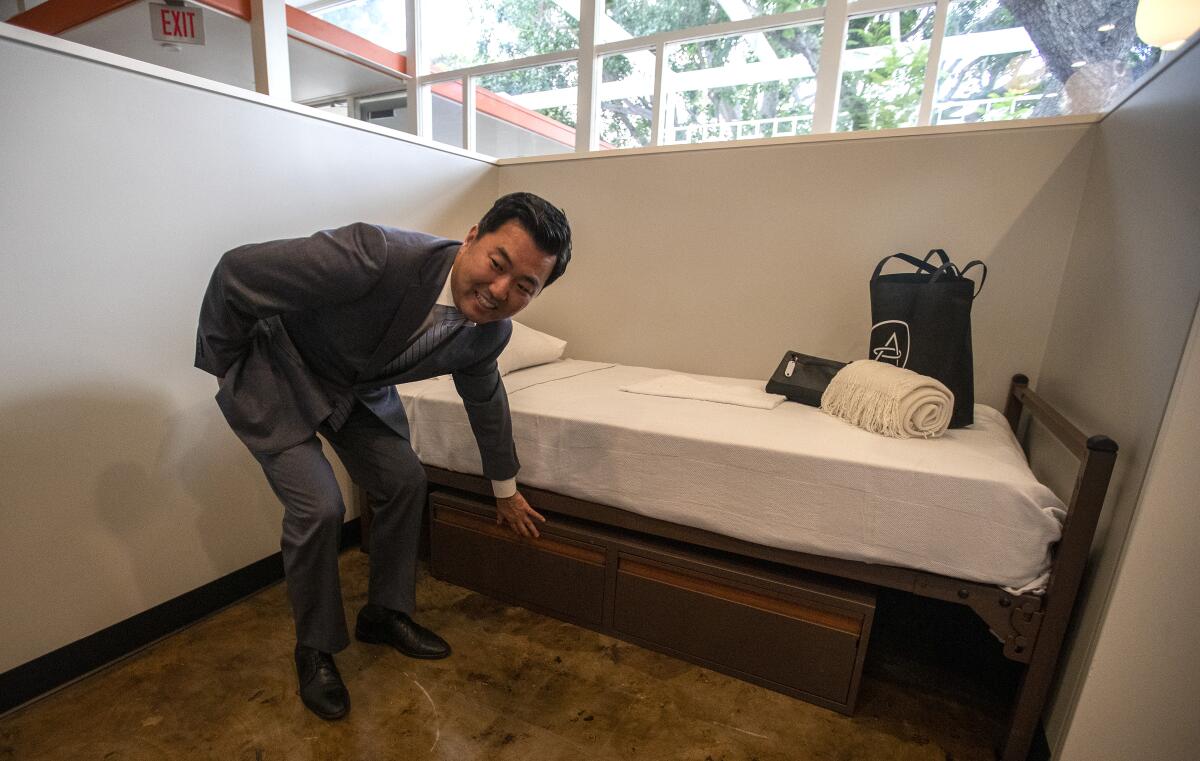
The $3.5-million construction project was funded by Measure HHH, a property tax boost the voters approved in 2016. The Weingart Center, a longtime skid row homeless agency, will operate the facility on a $657,000 annual contract from the county, providing mental health counseling, job training and even yoga.
Most of the city’s new shelters receive financing from the mayor’s $75-million bridge housing program, which includes $30 million from the city’s general fund and $45 million in state emergency homeless funding. (The YWCA shelter drew on private donations.)
Last year, Ryu was shouted down by angry residents at a meeting over a prospective homeless housing site in Sherman Oaks, which was eventually withdrawn. By contrast, Hollywood neighbors embraced the library conversion, Ryu said.
Darren Gold, 48, a marketing professional whose apartment overhangs the library property, said homeless people had lived behind the ugly green screen fence on the library grounds during the building’s long hiatus.
“We’re ready to volunteer to do whatever is needed to welcome the new residents,” Gold said.
Garcetti, in brief remarks at the opening, said that up to 26 shelter projects are pending in neighborhoods throughout the city. The exceptions are the Westside district of Councilman Paul Koretz and the San Fernando Valley district of newly elected Councilman John Lee, which includes Northridge and Porter Ranch.
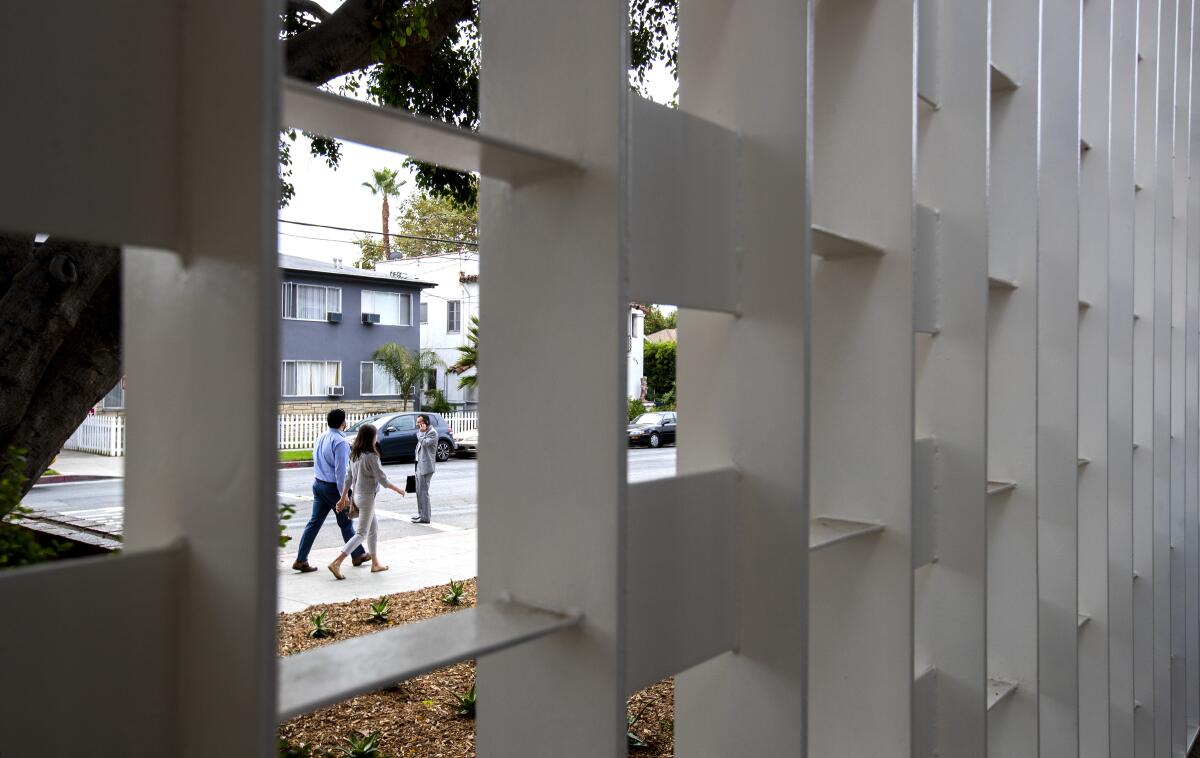
Also this week, South Los Angeles opened its first new homeless shelter, a tent structure with beds for 63 men and 37 women currently sleeping on the street or in their cars in the area, Councilman Marqueece Harris-Dawson said. The site on St. Andrews Place was an unused dog park.
Harris-Dawson said he expects the bridge home program to bring a “change you can notice” by the holidays in the city’s street encampment crisis. Garcetti declined to say when he expected an appreciable difference, but said, “Every time there are new beds, we feel it on the streets.”
Ann McCall, who also spoke at the Hollywood opening, said the new shelters bring hope, which is in short supply on the streets.
“I was one of those women on the street six years ago,” she said. “I don’t care what anybody says; they really don’t want to be there.”
More to Read
Sign up for Essential California
The most important California stories and recommendations in your inbox every morning.
You may occasionally receive promotional content from the Los Angeles Times.
